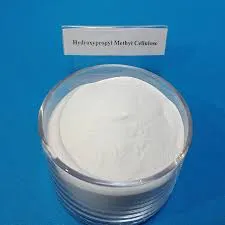
Nov . 02, 2024 22:42 Back to list
hpmc excipient
Understanding HPMC Excipient in Pharmaceutical Formulations
Hydroxypropyl methylcellulose (HPMC) is a versatile excipient widely used in the pharmaceutical industry, particularly in formulating oral dosage forms, such as tablets and capsules. This cellulose derivative offers a unique combination of properties that make it vital in achieving the desired characteristics of pharmaceutical products.
HPMC is synthesized from cellulose through a series of chemical modifications, predominantly involving the reaction with propylene oxide and methyl chloride. This results in a polymer that is soluble in both hot and cold water, setting it apart from traditional cellulose, which is insoluble. The solubility profiles of HPMC depend on the degree of substitution of the hydroxyl groups, leading to various grades that can be tailored for specific applications.
Understanding HPMC Excipient in Pharmaceutical Formulations
In addition to its role as a binder, HPMC is highly valued for its ability to act as a controlled-release agent. By manipulating the viscosity and grade of HPMC used in formulations, pharmaceutical scientists can create matrices that control the release rate of the active pharmaceutical ingredient (API). This feature is particularly beneficial for extending the duration of action of medications, thereby improving patient compliance and therapeutic efficacy.
hpmc excipient

Moreover, HPMC also serves as a thickening agent and stabilizer in liquid formulations. Its ability to modify the rheological properties of solutions makes it suitable for various dosage forms, including suspensions and emulsions. This is particularly useful in maintaining the uniformity and stability of the formulation over time.
The safety profile of HPMC is another reason for its popularity in the pharmaceutical industry. As a non-toxic, non-irritating polymer, it is generally recognized as safe (GRAS) by regulatory bodies, which allows for a broad range of applications without significant health risks. HPMC is also compatible with many APIs, making it an ideal choice for combinations with other excipients.
Despite its many advantages, challenges exist in using HPMC. Its molecular weight and substitution grade can significantly affect the formulation, necessitating thorough pre-formulation studies to optimize the use of HPMC in specific applications. Additionally, the impact of HPMC on the bioavailability of certain drugs must be examined to ensure that therapeutic efficacy is not compromised.
In conclusion, HPMC stands out as a crucial excipient in the pharmaceutical formulation landscape. Its multifunctional properties, including binding, controlled-release, and stabilizing capabilities, empower formulators to design effective and patient-friendly medications. As the demand for innovative drug delivery methods continues to grow, HPMC will undoubtedly remain a cornerstone in research and development within the pharmaceutical sector.
-
Unlocking the Benefits of HPMC Products: A Gateway to Versatile Applications
NewsAug.07,2025
-
Unleashing the Potential of HPMC Ashland: A Comprehensive Look
NewsAug.07,2025
-
Tile Bonding Cellulose: The Key to Superior Adhesion and Durability
NewsAug.07,2025
-
Hydroxypropyl Methylcellulose Powder: The Versatile Component in Modern Pharmaceuticals
NewsAug.07,2025
-
Hydroxyethyl Cellulose: The Versatile Solution for Various Industries
NewsAug.07,2025
-
Hydroxyethyl Cellulose (HEC): The Versatile Polymer for Various Applications
NewsAug.07,2025







